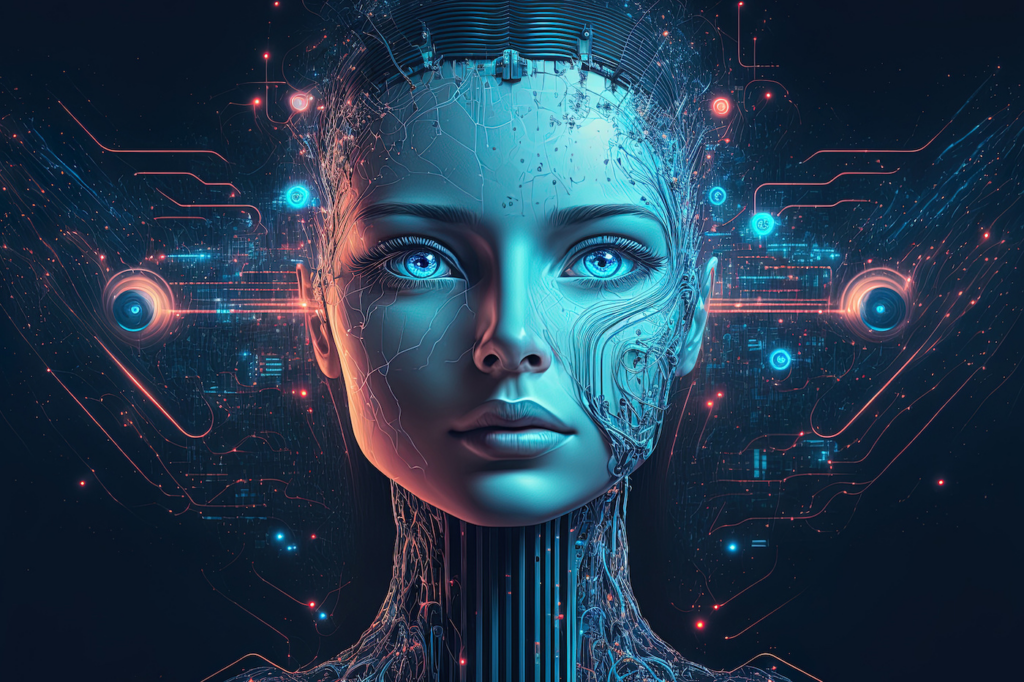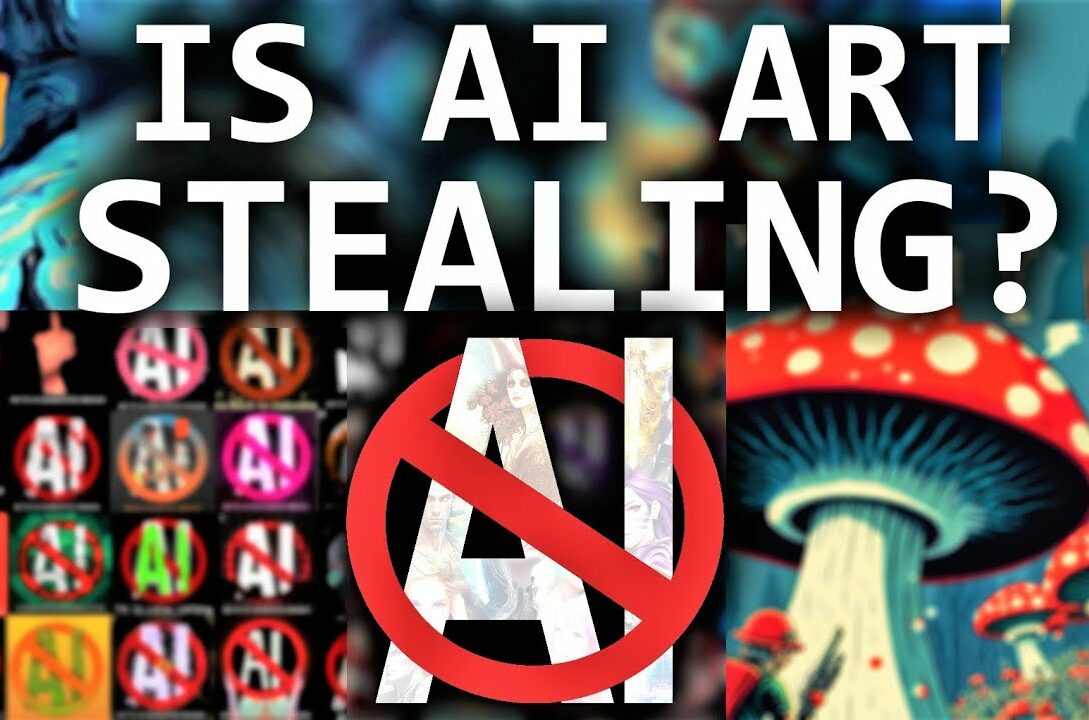Artificial Intelligence (AI) has been a buzzword for several years now. It has found its way into various industries, including the art world. AI-generated art has been gaining popularity, with many artists using it to create unique and innovative pieces. However, this has raised a question: does AI art steal art?
The intersection of AI and art has created a new form of creativity. AI algorithms can analyze vast amounts of data and generate art pieces that are unique and thought-provoking. However, this has led to concerns about whether AI art is original or a mere copy of existing works. Some argue that AI-generated art is not original, as it is created using pre-existing data. Others believe that AI art is a new form of creativity that should be celebrated.
Copyright concerns in AI art have also been raised. The legal landscape of AI art is still evolving, and there is no clear answer to whether AI art infringes on copyright laws. Some artists have even gone as far as suing AI-generated art platforms for copyright infringement. As AI art becomes more prevalent, it is essential to address these concerns and create a legal framework that protects the rights of artists.
Key Takeaways
- AI-generated art has raised questions about whether it is original or a copy of existing works.
- There are concerns about copyright infringement in AI art, and the legal landscape is still evolving.
- As AI art becomes more prevalent, it is essential to address these concerns and create a legal framework that protects the rights of artists.
The Intersection of AI and Art
Artificial Intelligence (AI) has become an increasingly popular tool for artists in recent years. We have seen how AI can be used to enhance the creative process and inspire new forms of digital art. At the same time, there are concerns about the impact of generative AI on the traditional art world.
AI as a Tool for Artists
AI has become an important tool for artists who want to explore new forms of creativity. AI can be used to generate new ideas, explore different styles, and even create entire works of art. For example, an AI tool can analyze an artist’s existing work to identify patterns and themes, and then use that information to generate new ideas.
AI can also be used to enhance the creative process by providing artists with new sources of inspiration. For example, an AI tool can analyze images, music, or other forms of media to identify patterns and themes that can be used to inspire new works of art.
Generative AI and Its Impact on Art
Generative AI, which involves using AI to create new works of art, has become a controversial topic in the art world. Some artists argue that generative AI is steal from human creativity and that AI-generated art should not be considered real art.
Others argue that generative AI is simply a new tool that artists can use to explore new forms of creativity. They point out that many great artists throughout history have used tools and techniques that were considered controversial at the time.
In conclusion, AI has become an increasingly important tool for artists, and it has the potential to inspire new forms of digital art. At the same time, there are concerns about the impact of generative AI on the traditional art world. We believe that AI can be a valuable tool for artists, but it is important to consider the ethical implications of using AI to create new works of art.
Copyright Concerns in AI Art
With the advent of AI-generated artwork, there has been a growing concern about potential copyright infringement issues. The use of copyrighted images to train AI algorithms has raised questions about ownership and intellectual property rights. In this section, we will discuss the potential infringement issues and fair use of AI art.
Potential Infringement Issues
One of the major concerns in the use of AI-generated artwork is the potential infringement of copyrighted images. AI algorithms are trained on large datasets of images, many of which are copyrighted. The use of these images without permission or license could result in copyright infringement.
The harm to artists is not hypothetical—works generated by AI image products ‘in the style’ of a particular artist are already sold on the internet, siphoning commissions from the artists. 1
The use of copyrighted images in AI-generated artwork could also lead to legal disputes over ownership and intellectual property rights. It is essential to ensure that the images used to train AI algorithms are properly licensed or in the public domain to avoid any infringement issues.
Fair Use and AI Art
The fair use doctrine allows for the use of copyrighted material without permission for certain purposes, such as criticism, commentary, news reporting, teaching, scholarship, or research. Whether the use of copyrighted images in AI-generated artwork falls under fair use is a matter of debate.
One argument in favor of fair use is that AI-generated artwork is transformative and adds significant value to the original work. However, others argue that the use of copyrighted images in AI-generated artwork is not transformative enough and could harm the market for the original work.
In conclusion, the use of copyrighted images in AI-generated artwork raises concerns about potential infringement issues and ownership disputes. The fair use doctrine provides some guidance, but it is still a matter of debate whether the use of copyrighted images in AI-generated artwork falls under fair use. It is essential to ensure that the images used to train AI algorithms are properly licensed or in the public domain to avoid any infringement issues.
Footnotes
The Legal Landscape of AI Art
As AI-generated art becomes more prevalent, the legal landscape surrounding it is still evolving. In this section, we will explore the existing legislation related to AI art, proposed changes, and their implications.
Existing Legislation and AI Art
Currently, there is no specific legislation that addresses AI art. However, existing laws related to copyright and intellectual property may apply. For example, the Copyright Act of 1976 grants copyright protection to original works of authorship, including visual art. Therefore, AI-generated art that is original and creative may be eligible for copyright protection.
However, the question of consent and compensation for the artists involved in the creation of AI art remains a grey area. While some argue that the AI system itself should be considered the artist, others believe that the human input involved in the creation process should be recognized and compensated.
Proposed Changes and Their Implications
In recent years, there have been proposals for changes to legislation that would specifically address AI art. For example, the Copyright Alternative in Small-Claims Enforcement (CASE) Act of 2019 would establish a small claims court for copyright disputes, including those related to AI-generated art. This would allow artists to pursue legal action without the need for expensive litigation.
Another proposed change is the creation of a new type of license specifically for AI-generated art. This license would outline the terms of use for AI-generated art and provide compensation for the human input involved in the creation process.
However, there are also concerns that the creation of new legislation could stifle innovation and creativity in the field of AI art. It is important to strike a balance between protecting the rights of artists and allowing for the continued development and evolution of AI art.
In conclusion, while the legal landscape surrounding AI art is still evolving, it is clear that existing laws related to copyright and intellectual property may apply. As proposals for changes to legislation continue to emerge, it is important to consider the implications for both artists and the development of AI art as a whole.
The Future of AI in Art

As AI continues to evolve, we can expect to see more innovations in the field of AI art. These innovations could lead to new and exciting forms of art that were previously impossible to create. In this section, we will explore some of the potential innovations and ethical considerations that come with the future of AI in art.
Potential Innovations
One of the most exciting potential innovations in AI art is the ability to create art that is truly unique. With the help of AI, artists can create pieces that are unlike anything that has been seen before. For example, OpenAI has developed a system that can generate images that are completely new and have never been seen before. This technology could be used to create art that is truly one-of-a-kind.
Another potential innovation is the ability to create art that is more accessible. With the help of AI, artists can create pieces that are more inclusive and can be enjoyed by a wider audience. For example, Microsoft has developed an AI system that can create 3D models of paintings that can be explored by people who are visually impaired. This technology could be used to create more inclusive art that can be enjoyed by everyone.
Ethical Considerations
As with any new technology, there are ethical considerations that must be taken into account. One of the biggest concerns with AI art is the potential for it to stealing art from human artists. While AI-generated art may be impressive, it is important to remember that it is still created by a machine and not a human. This raises questions about who owns the rights to the art and whether or not AI-generated art should be considered real art.
Another ethical consideration is the potential for AI art to put human artists out of work. While AI-generated art may be impressive, it is still created by a machine and not a human. This raises questions about the future of human artists and whether or not they will be able to compete with AI-generated art.
In conclusion, the future of AI in art is both exciting and uncertain. While there are many potential innovations that could lead to new and exciting forms of art, there are also ethical considerations that must be taken into account. As we continue to explore the possibilities of AI in art, it is important to remember that we must approach this technology with caution and consideration.



![11 Best AI Sales Tools To Boost Your Revenue [year] 4 AI Sales Tools](https://leoscale.co/wp-content/uploads/2023/12/AI-Sales-Tools-150x150.png)
![Top 12 AI Story Generators to Help You Write [year] 5 AI Story Generators](https://leoscale.co/wp-content/uploads/2023/12/AI-Story-Generators-150x150.jpg)
![15+ Best AI Background Remover in [year] AI Background Remover](https://leoscale.co/wp-content/uploads/2024/01/AI-Background-Remover-150x150.jpg)
![11+ Best AI Tools for Interview Preparations in [year] AI Interview Preparation](https://leoscale.co/wp-content/uploads/2024/01/AI-Interview-Preparation-150x150.jpg)
![Top 10 AI Tools for Learn Languages You Should Try [year] AI Tools for Learn Languages](https://leoscale.co/wp-content/uploads/2023/12/AI-Tools-for-Learn-Languages-150x150.jpg)

![13 Best AI Search Engines to Try Now in [year] AI Search Engine](https://leoscale.co/wp-content/uploads/2023/12/AI-Search-Engine-150x150.jpg)